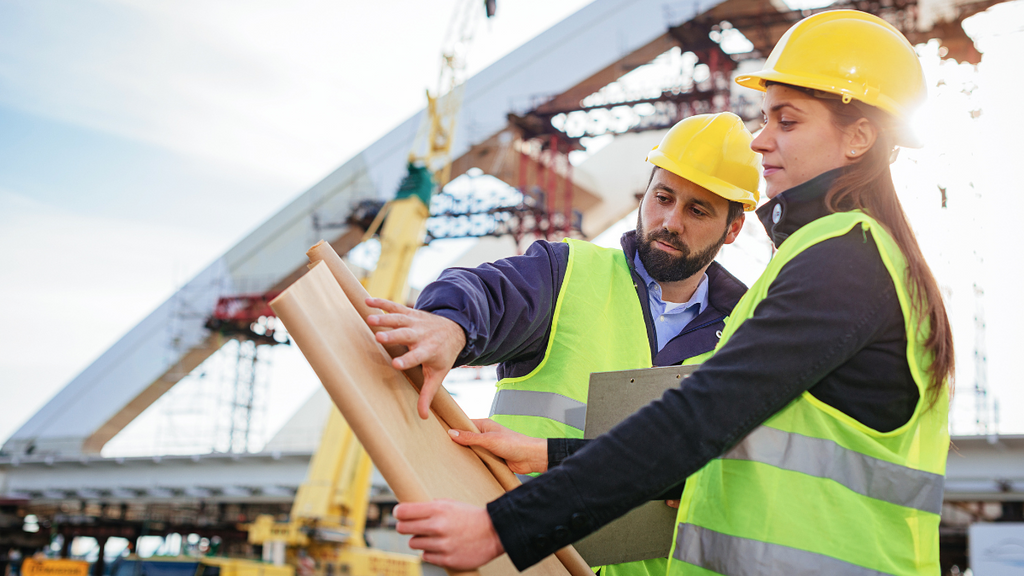Facts About Geotheta Uncovered
Facts About Geotheta Uncovered
Blog Article
5 Easy Facts About Geotheta Shown
Table of ContentsGeotheta Fundamentals ExplainedThe Geotheta PDFsThe Greatest Guide To GeothetaThe Best Guide To GeothetaThe 9-Minute Rule for Geotheta

They conduct site examinations, collect samples, perform laboratory tests, and analyze information to examine the suitability of the ground for building and construction tasks - Tailings Engineer. Based on their findings, geotechnical engineers offer suggestions for foundation style, incline stability, preserving frameworks, and reduction of geotechnical threats. They collaborate with other specialists, such as architects, architectural designers, and building teams, to guarantee that geotechnical factors to consider are incorporated right into the total task style and execution
By assessing the behavior and homes of soil and rock, they can identify potential geotechnical hazards such as landslides, dirt negotiation, or incline instability. Their know-how assists protect against failures or accidents that can threaten lives and residential or commercial property. Here are some detailed duties and duties of a geotechnical designer: Website Investigation: Geotechnical engineers conduct website examinations to collect data on subsurface problems.
They analyze the information to understand the residential properties and actions of the soil and rock, including their toughness, leaks in the structure, compaction features, and groundwater conditions. Geotechnical Analysis and Layout: Geotechnical designers assess the information gathered during website investigations to assess the security and suitability of the site for construction projects. They perform geotechnical calculations and modeling to assess variables such as bearing ability, settlement, incline security, lateral planet stress, and groundwater circulation.
Not known Facts About Geotheta
Foundation Design: Geotechnical designers play a vital role in designing structures that can securely support the desired structure. They examine the soil conditions and lots requirements to establish the appropriate structure kind, such as superficial structures (e.g., footings), deep structures (e.g (https://geotheta.webflow.io/)., piles), or specialized strategies like soil enhancement. They take into consideration variables such as negotiation limitations, bearing ability, and soil-structure interaction to create optimum foundation layouts
They evaluate building and construction plans, screen website tasks, and conduct area assessments to confirm that the design referrals are complied with. If unanticipated geotechnical issues arise, they examine the situation and supply recommendations for removal or adjustments to the layout. Risk Assessment and Mitigation: Geotechnical designers examine geotechnical hazards and dangers associated with the task site, such as landslides, liquefaction, or dirt disintegration.

Collaboration and Interaction: Geotechnical designers function very closely with other professionals entailed in a project, such as designers, architectural engineers, and construction teams. Effective interaction and collaboration are important to incorporate geotechnical factors to consider right into the overall job style and building procedure. Geotechnical engineers offer technological experience, answer inquiries, and ensure that geotechnical demands are fulfilled.
Getting My Geotheta To Work
Right here are some kinds of geotechnical engineers: Foundation Designer: Structure engineers specialize in creating and analyzing foundations for visit this website frameworks. They evaluate the soil problems, lots needs, and site qualities to figure out one of the most proper structure type and design, such as shallow foundations, deep structures, or specialized strategies like pile structures.
They evaluate the factors affecting incline stability, such as soil residential or commercial properties, groundwater conditions, and incline geometry, and create strategies to prevent slope failures and reduce risks. Quake Designer: Earthquake engineers focus on evaluating and developing frameworks to stand up to seismic forces. They assess the seismic danger of a site, review dirt liquefaction capacity, and develop seismic layout requirements to make sure the safety and security and durability of structures throughout earthquakes.
They carry out area testing, accumulate examples, and examine the collected data to identify the dirt homes, geologic developments, and groundwater problems at a website. Geotechnical Instrumentation Engineer: Geotechnical instrumentation engineers concentrate on monitoring and measuring the actions of soil, rock, and frameworks. They set up and preserve instrumentation systems that keep track of factors such as dirt settlement, groundwater degrees, incline movements, and architectural variations to assess efficiency and provide early cautions of possible concerns.
The smart Trick of Geotheta That Nobody is Talking About
They conduct examinations such as triaxial tests, combination tests, straight shear examinations, and leaks in the structure examinations to gather data for geotechnical analysis and style. Geosynthetics Designer: Geosynthetics designers specialize in the style and application of geosynthetic products, such as geotextiles, geogrids, and geomembranes. They make use of these materials to enhance dirt stability, strengthen inclines, give drain options, and control disintegration.
They tend to be investigative individuals, which indicates they're intellectual, reflective, and investigative. They wonder, methodical, logical, analytical, and sensible. A few of them are likewise social, suggesting they're kind, charitable, participating, individual, caring, useful, understanding, sensible, and friendly. Does this sound like you? Take our totally free career examination to learn if geotechnical designer is just one of your leading career matches.
In the workplace atmosphere, geotechnical engineers use specialized software application tools to perform calculations, develop styles, and analyze information. They prepare records, review project specifications, interact with clients and employee, and coordinate task tasks. The office setup gives a favorable atmosphere for study, analysis, and partnership with other specialists associated with the project.
Geotheta Things To Know Before You Get This
They often go to project sites to carry out site investigations, evaluate geotechnical problems, and gather information for evaluation. These brows through include traveling to various places, sometimes in remote or difficult terrains. Geotechnical designers may execute soil sampling, conduct tests, and screen building and construction activities to guarantee that the geotechnical facets of the job are being implemented correctly.
Geotechnical designers additionally work in specialized geotechnical laboratories. Geotechnical lab designers function thoroughly in these atmospheres, handling testing devices, operating instruments, and taping data.
Report this page